Space Image of the Day Gallery (April 2016)
'Guardian of the Milky Way'
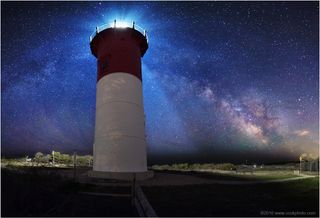
Friday, April 15, 2016: Astrophotographer Chris Cook caught the Nauset Lighthouse standing tall under the Milky Way in Eastham, Cape Cod, Massachusetts, on April 9, 2016. On his website, he mentioned that the image consists of a panorama of four 20-second exposures. He entitled it: "Guardian of the Milky Way."
— Tom Chao
I'm Looking Through You
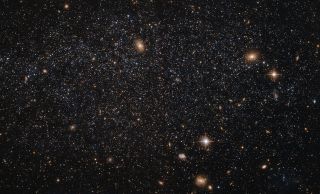
Monday, April 18, 2016: Dwarf galaxy Leo A lies at a distance of about 2.5 million light-years from Earth and is a member of the Local Group of galaxies, which includes our Milky Way galaxy and the Andromeda galaxy. The few million stars of Leo A can barely be distinguished as a single body, with distant galaxies in the background even visible through it. Dwarf galaxies' small size makes them hard to study but those in the Local Group are close enough to examine in detail. Unusually, Leo A shows no signs of recent galactic interaction that would spur star formation, but about 90 percent of the stars in Leo A are less than eight billion years old, very young in cosmic terms. Image released April 11, 2016.
— Tom Chao
'The Burning Tree'
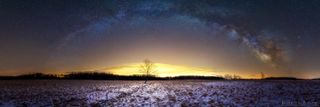
Tuesday, April 19, 2016: Astrophotographer Joshua Snow captured the Milky Way arching over the Finger Lakes National Forest near Watkins Glen, New York. He entitled it: "The Burning Tree."
— Tom Chao
Good Morning, Earthshine
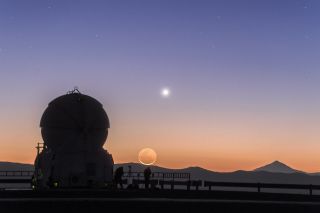
Wednesday, April 20, 2016: Two astrophotographers, Babak Tafreshi (left) and Yuri Beletsky, prepare their equipment as the sun rises at ESO's Paranal Observatory at Cerro Paranal in Chile. Above the mountains, a crescent moon and planet Venus appear. The moon's entire disc appears owing the phenomenon of earthshine, light that reflects from the Earth. In the foreground, an Auxiliary Telescope, part of the Very Large Telescope, stands in silhouette. Image released April 18, 2016.
— Tom Chao
Southern Lights
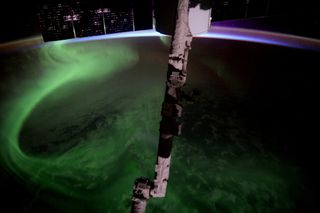
Thursday, April 21, 2016: ESA astronaut Tim Peake (of British nationality) tweeted an image of the Aurora Australis taken from his vantage point on the International Space Station, April 17, 2016. He wrote: "Went to close the shutters last night and saw this amazing #aurora Australis flic.kr/p/FsA4vz."
— Tom Chao
Held Together by Gravity
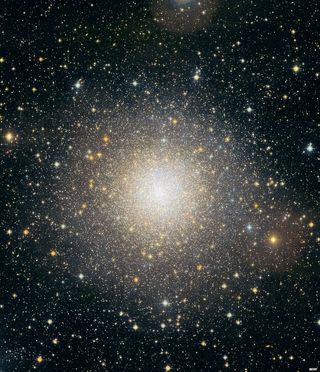
Friday, April 22, 2016: Globular cluster Messier 10 appears against a background of faint distant galaxies. As the cluster sits high above the plane of our galaxy, fewer stars lie in the foreground to obstruct the view of the deep-space object. Globular clusters consist of stars in dense groups bound together by mutual gravitational attraction, and gravitating as a whole around their host galaxy. Messier 10, also called NGC 6254, lies some 14,000 light years from Earth in the equatorial constellation of Ophiuchus. Image released April 2016.
— Tom Chao
A New Dawn
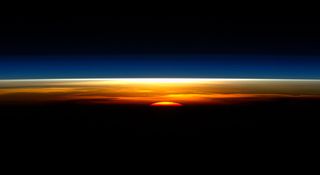
Monday, April 25, 2016: A new day begins on Earth and in space in this amazing sunrise snapshot from NASA astronaut Tim Kopra on the International Space Station. Kopra took this photo on April 20 and has been posting a sunrise photo every morning during his mission and sharing them on Twitter under his moniker @astro_tim. the space station actually sees 16 sunrises and sunsets each Earth day because of its speed. It completes an orbit every 90 minutes.
— Tariq Malik
Get the Space.com Newsletter
Breaking space news, the latest updates on rocket launches, skywatching events and more!
A Space Sentinel
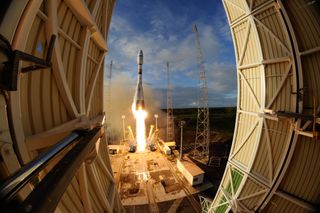
Tuesday, April 26, 2016: 3, 2, 1 ... LIFTOFF! On Monday, April 25, an Arianespace Soyuz rocket launched into orbit carrying the European Space Agency's Sentinel-1B Earth-observation radar satellite. The satellite is one of two Sentinel craft that will use their advanced radar to map Earth in stunning detail, regardless of whether it's daytime or nighttime.
— Tariq Malik
In the Mouth of Leo A
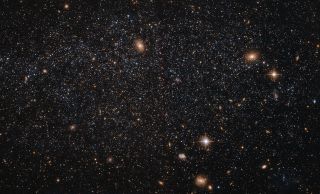
Wednesday, April 27, 2016: These dazzling stars may seem like stellar individuals in the sea of space, but they are actually all part of a nearby galaxy called Leo A located 2.5 million light-years from Earth. This view from the Hubble Space Telescope, released on April 15, shows that the stars are so spread out in Leo A that background galaxies can be seen between them. About 90 percent of Leo A's stars are less than 8 billion years old and the galaxy seems to have had little interactions with its galactic neighbors in the Local Group (which is also home to our Milky Way).
— Tariq Malik
Craters Within Craters
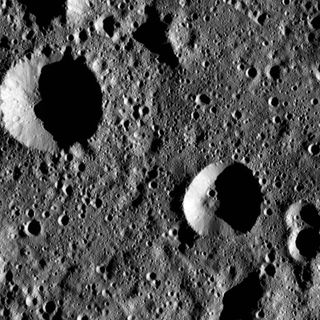
Thursday, April 28, 2016: That the dwarf planet Ceres is a battered world is crystal clear in this view of the region inside the vast Chaminuka Crater. Located on the southern hemisphere of Ceres, Chaminuka Crater is a 76-mile (122 kilometers) crater named in honor of the spirit Chaminuka who, according to legends of the Shona people in Zimbabwe, brought rains in times of drought. Craters within craters are visible in this view Dawn's orbit 240 miles (385 km) above the surface of Ceres. You can see more amazing photos of Ceres by Dawn here.
— Tariq Malik
Join our Space Forums to keep talking space on the latest missions, night sky and more! And if you have a news tip, correction or comment, let us know at: community@space.com.

Space.com is the premier source of space exploration, innovation and astronomy news, chronicling (and celebrating) humanity's ongoing expansion across the final frontier. Originally founded in 1999, Space.com is, and always has been, the passion of writers and editors who are space fans and also trained journalists. Our current news team consists of Editor-in-Chief Tariq Malik; Editor Hanneke Weitering, Senior Space Writer Mike Wall; Senior Writer Meghan Bartels; Senior Writer Chelsea Gohd, Senior Writer Tereza Pultarova and Staff Writer Alexander Cox, focusing on e-commerce. Senior Producer Steve Spaleta oversees our space videos, with Diana Whitcroft as our Social Media Editor.











